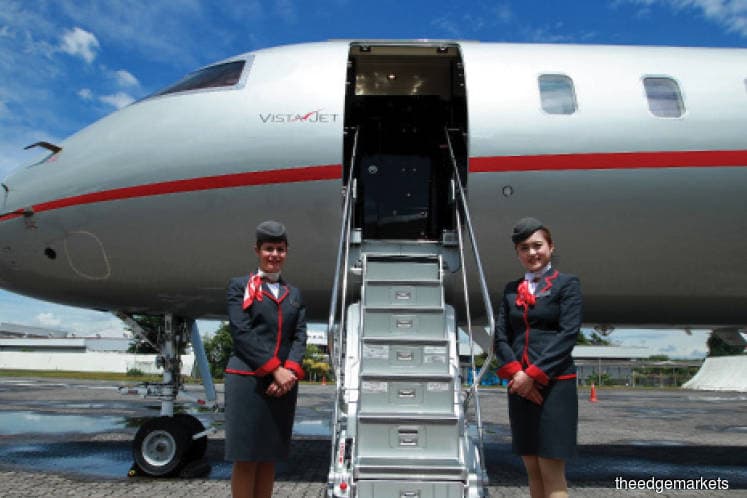
This article first appeared in The Edge Financial Daily on November 8, 2017
KUALA LUMPUR: VistaJet, a business carrier service provider headquartered in Malta, is looking to expand its Malaysian sales by up to 25% in both 2017 and 2018, capitalising on the growing wealth of the company’s customers here.
VistaJet’s global chief commercial officer Ian Moore told a media briefing yesterday that Malaysia is the company’s second-biggest market in Asia after China.
“22% of our customers in Asia come from Malaysia, and for the first three quarters this year, we saw 45% year-on-year growth in international passengers departing from Malaysia. There was an 18% growth in international passengers flying into the country. In terms of flight, there was a 12% increase in international flights departing from Malaysia, and a 10% increase in flights arriving in the country,” he said, but declined to reveal the tally.
While he preferred not to share details of VistaJet’s customers, Moore said they are mostly senior executives, ultra-high-net-worth individuals, royalty and politicians.
These people, according to Moore, mainly fly to places like Singapore, Hong Kong, Macau, Jakarta, and Phuket.
Moore also shared that the top five places that VistaJet flies into Malaysia from are Singapore, Hong Kong, the Maldives, Phuket and Hanoi.
VistaJet, which was founded by Thomas Flohr back in 2004 with two aircraft, currently has a fleet of 70, all manufactured by Bombardier Inc. Of that, about 15 of them fly in Asia.
“Today, 40% of new businesses in Asia are moving away from owning an aircraft by themselves. So what we are offering is 24/7, 365 days of available flights to our customers. Because when they spend money to own an aircraft, they may not be aware that there are periods in a year when their aircraft are not available because of maintenance, so our products can complement that,” he said.
Even with the Budget 2018, which will see aircraft purchase goods and services tax (GST) being zero-rated, Moore is unfazed by such policy.
“When we do our analysis of our services versus aircraft ownership, we never take taxation into account, because most of people who buy aircraft do it via corporations and they use their tax breaks as well, so we are not concerned. That [zero-rated GST] might promote some ownership for some people, but I don’t worry very much. We are comfortable with what we provide,” he explained.
So far, Moore said the average subscription for VistaJet’s services is about 100 to 200 flight hours per customer, with an average subscription contact of three years, which would cost between US$1.2 million (RM5.08 million) to US$1.5 million.
“We also have contracts for 1,000 and 800 flight hours, but not all of them like that. Our customers’ average age is getting younger as well, because the wealth growing pace is getting faster,” he said.
Currently, VistaJet’s customers are aged between 25 and 92, with an average age of 52 years.
Moore said moving forward, the business aviation market is likely to grow by 6% per annum globally.
“There are currently about 19,200 business jets around the globe today, with two million flight hours in this category. People travel on business jets mainly because of the privacy, the flexibility, and because it saves time,” he said.